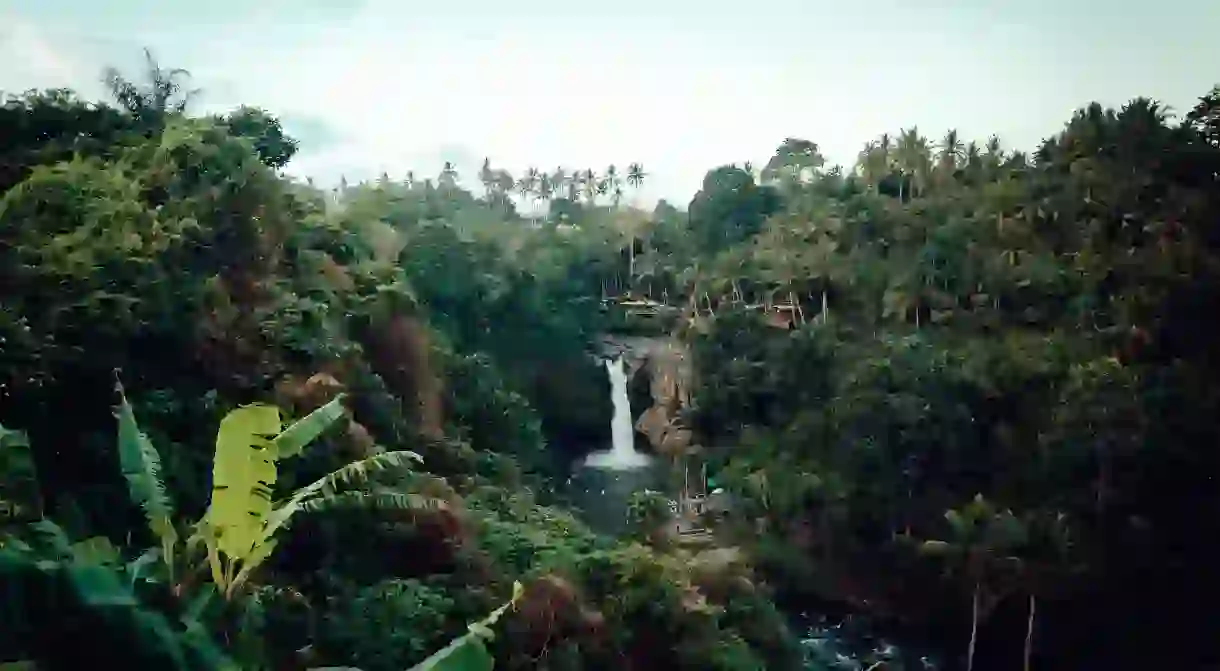11 Amazing Facts About the Amazon Rainforest

Stretching over a huge portion of the South American continent, the world’s largest and most bio-diverse rainforest is chock full of surprises. As mysterious as it is breathtaking, the Amazon remains one of the most written about and studied ecosystems on earth. Here are a few facts you probably didn’t know about the great Amazon rainforest.
Soak up the best of South America on this eight-day express adventure from Andes to the Amazon. On this premium small-group trip our Local Insider will be your expert guide to the magical forests of Ecuador.
It’s mindbogglingly huge
Two and a half million square miles, to be precise. The world’s largest rainforest can be found across nine Latin American countries. In fact, if it were a country itself, it would be the ninth largest in the world. For some more perspective, The United Kingdom and Ireland could fit into it 17 times over.
Diversity is off the charts
Although these numbers are contentious, best scientific estimates suggest there are at least 40,000 plant species, 3,000 types of fish, 1,300 bird species, 430 mammals, and a staggering 2.5 million different kinds of insects.
Quite a few humans live there too
The great rainforest may conjure up images of exotic and possibly terrifying wildlife, though its human population is actually quite significant as well. Some 21 million people call the Amazon home, including an estimated 50 remote tribes who have not yet made contact with modern civilization.
It’s not really the lungs of the earth
This misconceived moniker comes from the fact the rainforest pumps out a staggering 20% of the world’s oxygen each day, far more than any other ecosystem. While that may be true, its decomposing plant matter also puts out roughly the same amount of CO2, meaning the great rainforest is more or less in equilibrium. The vast majority of the oxygen we breath actually comes from microorganisms throughout the world’s oceans.
It’s disappearing at an alarming rate
Probably even faster than you think. A depressing 1.5 acres of the Amazon vanishes every single second and with it an average of 137 species become extinct each day. Deforestation in the Amazon alone accounts for 30% of global carbon emission, and if things continue the way they are, there won’t be anything left in 40 years. Most of the destruction is to make room for pastures to raise cattle, so it’s probably about time we considered cutting down on red meat.
It’s really dark at the bottom
Throughout large parts of the Amazon, the forest floor is almost completely black as only 1% of sunlight can make it through the thick canopy. In fact, when it rains it takes around 10 minutes for water to seep down to the shrubbery below.
Somebody swam the whole river
A bloke named Martin Strel undertook the marathon effort back in 2007, swimming up to ten hours a day for an impressive 66 days.
It might be the longest river in the world afterall
Trivia buffs will jump at the chance to tell you the Nile is the world’s longest river. However, according to a group of scientist types who carried out a complex study using plenty of whiz-bang technology, the Amazon river actually begins in the Peruvian Andes and extends for 4,225 miles (6,800 kilometers), some 65 miles (105 km) longer than the Nile. Either way, there is no doubt it’s the biggest river by volume, pumping out a staggering 55 million gallons of water into the Atlantic per second.
A lot of our food and medicine comes from there
Over 80% of the world’s food varieties originate from the Amazon rainforest, including coffee, which is reason enough to preserve the damn thing in our book. As for medicine, more than 25% of modern pharmaceuticals contain Amazonian ingredients, yet only 1% of plant species have been tested for medicinal properties. With that in mind, it’s not unreasonable to think the cure for cancer is hiding in there somewhere.
It depends on Africa to survive
The Amazon requires a continuous supply of fresh dust and phosphorous in its top soil to continue to thrive. A recent study using satellite imagery and advanced dust cloud modelling techniques found that particles get picked up in the Sahara desert and blown over the Atlantic before settling in the Amazon. Remarkably, the world’s largest (non-polar) desert is what nourishes the world’s largest and most bio-diverse rainforest.
The river used to run backwards
A 2006 geological study discovered that the oldest river sediments where actually found upstream of their source. After much hypothesizing, scientists came to the conclusion that the Amazon used to run east to west but changed direction once the Andes rose through the continent some 100 million years ago.













